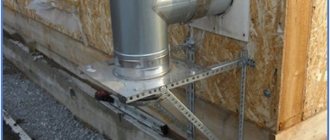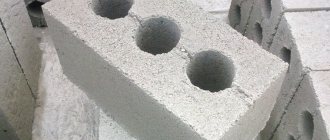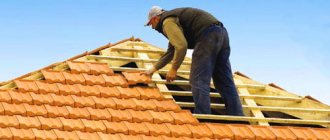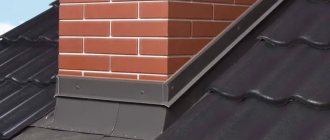It's at least the twenty-first century. However, where there are no gas mains, stove heating is still the cheapest way to heat your home in winter. It, like in all previous centuries, requires the solution of some technical problems.
One of the main ones is the removal of combustion products. From the article we will learn about the basic principles of building chimneys: what chimneys for a bathhouse and at home can be like, how to remove them through the ceilings and how to avoid the smell of burning in the house.
Since ancient times, in rural areas, a chimney was designed to show the wealth and good taste of the owner of the house.
Construction
Let us first consider separately the cases of a bathhouse and a residential building.
Bath
The bathhouse is heated for a relatively short time. The sauna stove is quite compact, and its function is to heat the stones lying on it, which serve as heat accumulators, to a fairly high temperature in a short time.
Combustion products leave the sauna stove very hot (up to 800 C).
In addition, good draft is especially important in a bathhouse: in a small room, even a small amount of carbon monoxide can lead to fatal consequences.
Hence the basic principles of construction:
- A massive foundation for the stove and pipe itself is not needed ; however, its thermal insulation from wooden structures is necessary;
- The first section of the chimney from the stove must be made of thick metal without additional thermal insulation ; then it is possible to use sandwich pipes or asbestos cement;
The sauna stove is smaller in size and structurally simpler
- The distance from the pipe to any structural elements not protected from fire is at least 350 mm . Openings in the ceiling, wall or roof are covered with a sheet of galvanized iron with an asbestos backing.
- Where the pipe passes through a vertical wall, the hot air rising from the pipe will come into contact with the wall and ceiling material . You can again protect it with an asbestos sheet.
Here, however, they made do with galvanizing
House
And here are other principles and goals. The oven should warm up to a relatively low temperature (70-80 C) and retain heat for as long as possible .
The temperature of combustion products in both Russian stoves and modern solid fuel boilers is relatively low; at the same time, too strong a draft will raise this temperature, and at the same time lead to the loss of most of the heat.
Hence the basic principles for constructing a furnace and chimney:
- The stove is a massive structure. A place for it must be provided at the design stage of the house . The stove should have common walls with the maximum number of living rooms; there must be a solid foundation underneath it, preventing subsidence and movement; The stove pipe must pass without kinks through the area of the floors and roofs where there are no beams or rafters nearby.
- Despite the abundance of modern materials, the best pipes can be made from is brick . If the pipe does not stand directly on the stove (the so-called mounted pipe), a separate foundation is required for it.
Here we see a chimney with a separate foundation. Hog is a horizontal chimney
Advice: the most reliable pipe is made of red annealed brick, which is laid on a mortar with lime.
This material is quite porous and, accordingly, has low thermal inertia: you won’t have to wait long for the chimney to stretch and the stove stops smoking.
Lime is needed so that the solution “breathes”, allowing a small amount of air to pass through. This will save you from untidy streaks on the outside of the pipe.
Rules for the production of pipe and furnace works
All pipe and stove work in the bathhouse must be carried out especially carefully and carefully, and better - under the supervision or with the help of specialists. There are a number of rules and requirements for work, and we will talk about them with you. After all, you want your stove to please you for many years without losing its performance properties, right?
Installation of a stove in a bathhouse.
Fire safety requirements for sauna stoves
So, there should be no cracks in the sauna stove, which not only impair the heating of the stove itself, but can also easily lead to a fire.
The stove must be durable, with a perfectly smooth surface (especially the inside) and have only thin seams. Also, the corners of the sauna stove and its walls must be strictly vertical, and vertical deviations cannot be more than 10 cm over the entire height of the stove.
Irregularities on the front sides are no more than 5 mm. All rows of masonry must be horizontal only.
There are basic rules for the production of pipe-stove works, the implementation of which is mandatory , otherwise it is impossible to guarantee the fire safety of the bathhouse building and its elements.
So, when installing a chimney and stove, it is important to take into account the distance between the stove itself and those materials that are easily flammable - at least 125 cm.
However, for any stove in a bathhouse there is its own installation diagram, which is usually used by qualified stove installers and which is easy to purchase from the manufacturer itself.
So, the rules require additional protection of walls. In the bathhouse, it is necessary to use a heat-repellent screen, the area of which should exceed exactly twice the area of the opening for the firebox.
And when installing the stove itself, it should be used only as a base made of non-combustible materials.
These are fireclay bricks, metal sheets, which are then covered with tiles, and a metal sheet on a special heat-insulating base.
Fire safety requirements for the construction of a stove in a bathhouse.
There should be a space of at least 26 cm between the outer wall of the stove and the wall of the bathhouse. And it is important to lay heat-insulating material on the floor in front of the heater door, covering it with a sheet of metal.
Also, the direction at the doors of the sauna firebox can only be in the diagonally opposite corner. This is just towards the long wall. Also, when installing the stove in the right corner from the entrance doors near the heater, the door should open only to the left.
The most difficult process is the proper installation of a traditional wood-burning stove in a bathhouse. After all, a wood-burning stove always heats up many times more than other stoves, and therefore fire safety rules are special for it.
Installation of a metal stove requires special ventilation of the bath room.
Thus, it is important to insulate the chimney with a special material that can withstand high temperatures - this is necessary to avoid condensation.
And the first heating with such a stove should be done only in an open bath - so that the unpleasant smell from the burning residues quickly evaporates. You can find information about ventilation separately in the “Communications” section on our website.
On the other hand, stoves do not have an expiration date, but they still need to be maintained in good condition. And for this it is important to plaster and whitewash every time as soon as burnouts and cracks are discovered. Also, the doors should always close well and not show any damage.
Regulations
Of course, it is better to entrust all pipe and furnace work to specialists who are well aware of all the intricacies of installation and understand the most modern furnaces. After all, such work carried out illiterately is a kind of time bomb. Any malfunction of chimneys can easily result in carbon monoxide poisoning and even fires.
Following the rules is a guarantee that the steam will have the required humidity, and the temperature of the water and air will be optimal. Therefore, there is such a document as the Rules for the performance of work, repair of furnaces and smoke ducts (1991). It is this document that contains all the basic requirements for the design, installation and operation of sauna stoves, as well as chimneys and ventilation pipes.
This document lays out safety rules on how to carry out all stove work when installing and servicing sauna stoves. Namely: design of sauna stoves, laying and repairing them, converting from one type of fuel to another, laying ventilation and chimney pipes, repairing pipes and insulation, as well as cleaning ventilation and chimney pipes and checking their performance.
Source: https://vasha-banya.com/pechi/pravila-proizvodstva-trubo-pechnyx-rabot.html
Basic Concepts
We will refrain from giving detailed instructions on the construction of the furnace and the pipe for it. This is exactly the case when amateur efforts are not needed: an experienced stove maker will do everything immeasurably better than an amateur with a construction manual.
Let us explain, however, the basic terms and concepts. You will encounter some of them during the design and construction phase, and some - already during the operation of the furnace.
Work rules
The rules for the production of pipe-furnace work were published by the Russian Firefighting Community in 2006 (this is a reissue; before that there were several more editions). Most of the rules concern safety precautions during work and the optimal scheme for their organization.
However, there are also technical points:
- For the laying of the furnace itself and the pipe, red annealed brick without voids and cracks of a grade not lower than M100 is used;
The best material for a stove is the same as a couple of centuries ago
- Areas that are exposed to high temperatures are finished with fire bricks . This includes the first few rows of the nozzle pipe;
- For fire protection, asbestos or felt soaked in clay is recommended;
- The rules for pipe-furnace work prohibit firing a furnace with an open combustion door. This is due to safety precautions; however, an open door also sharply increases draft, which leads to a loss of oven efficiency.
- A brick chimney should not have any narrowings . Actually, the rule applies to any pipe: narrowings will collect soot.
- Ceramic pipes require the mandatory installation of a container to collect condensate ; The socket of profiled ceramic and stainless steel pipes is always mounted upward, “along the condensate.”
This installation method is necessary to ensure that condensate remains inside the pipe.
- Pipe and furnace work is carried out taking into account the minimum distance from the chimney to metal or reinforced concrete beams of 130 mm. Temperature changes over a wide range will even damage the strength properties of steel.
- Pipeline work must be carried out by a person who has a certificate to carry out the work.
Advice: formally, the authors of the instructions are right.
Unprofessional installation of a stove and chimney can lead, at best, to unnecessary fuel consumption, and at worst, to a fire and carbon monoxide poisoning.
However, in villages and villages there are still hereditary stove makers without any special education, who are immeasurably more experienced than any certified specialist.
Alas, they are no different in appearance from an ordinary drunken villager, so you will have to rely on your intuition











